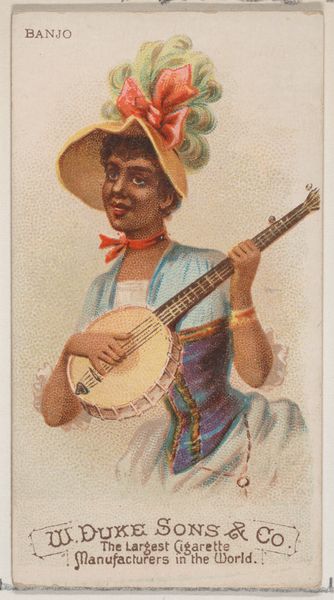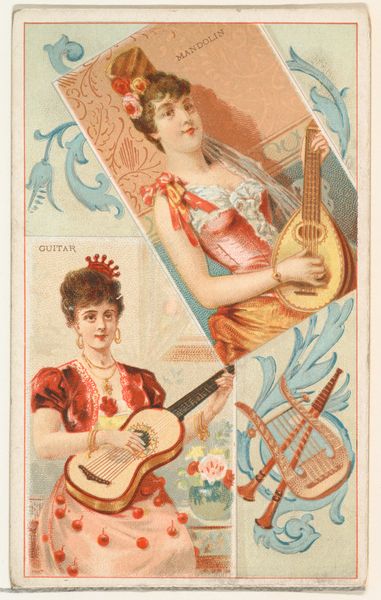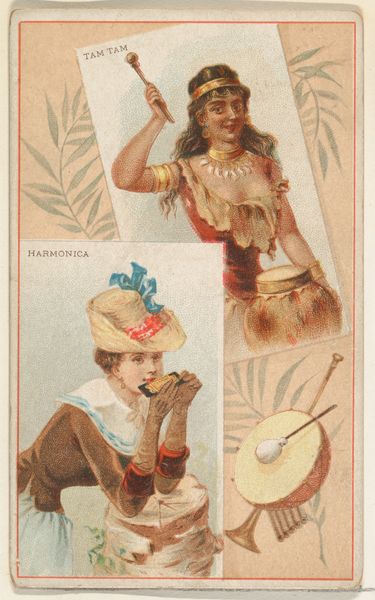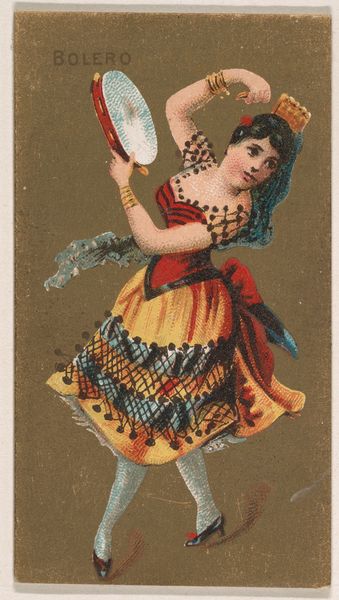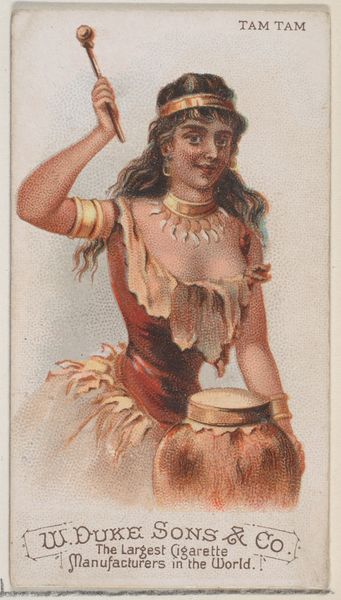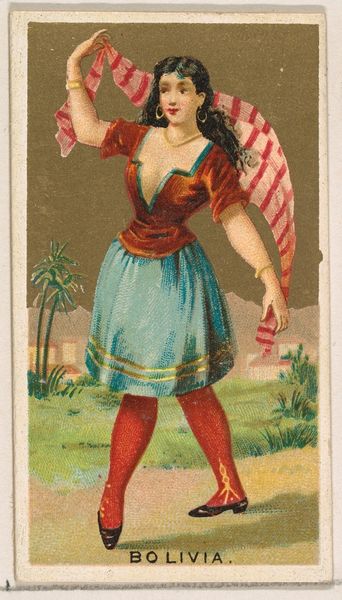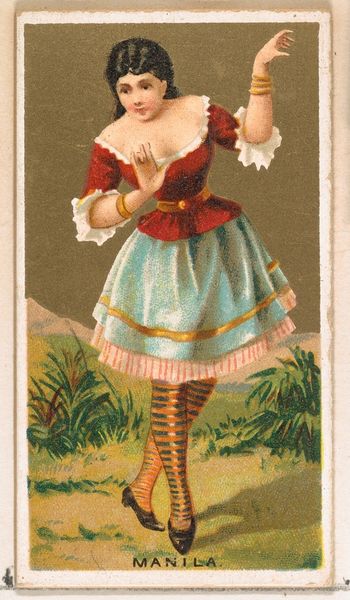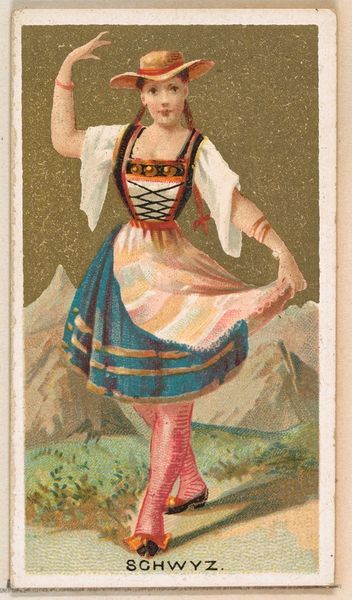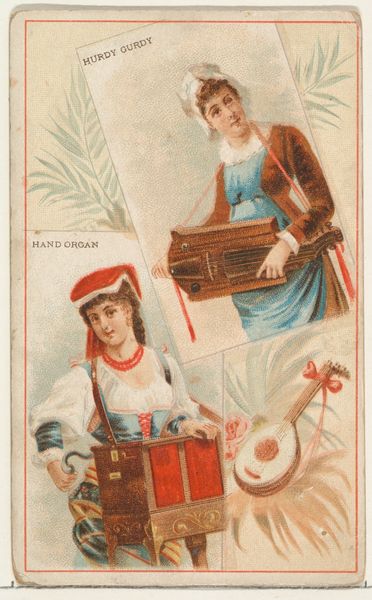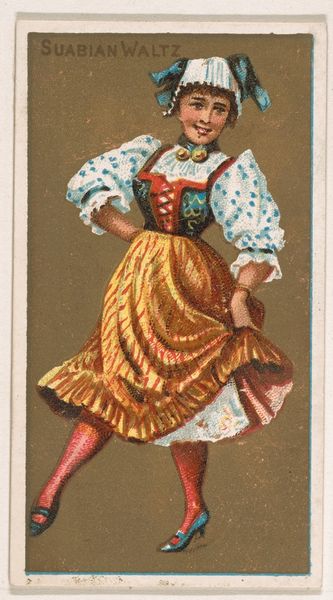
Bones and Banjo, from the Musical Instruments series (N121) issued by Duke Sons & Co. to promote Honest Long Cut Tobacco 1888
0:00
0:00
drawing, coloured-pencil, print, watercolor
#
drawing
#
coloured-pencil
#
water colours
# print
#
caricature
#
watercolor
#
coloured pencil
#
genre-painting
#
musical-instrument
Dimensions: Sheet: 4 1/16 × 2 1/2 in. (10.3 × 6.4 cm)
Copyright: Public Domain
Curator: What a striking image. This is "Bones and Banjo," a print from 1888 created by W. Duke, Sons & Co. as part of their Musical Instruments series to promote Honest Long Cut Tobacco. Editor: It’s vibrant, even gaudy. The figures pop, and the instruments feel almost secondary to the human figures. I find it interesting that "Bones" has prominent position above the banjo player. Curator: The prominent display definitely reflects the musical tastes of the era. Minstrel shows, featuring bone percussion and banjo, were immensely popular, albeit in a very problematic way. Note that both performers are depicted in blackface. Editor: The racist undertones are hard to ignore. Even the positioning of the instruments seems to reinforce a hierarchy, with the simpler percussive bones elevated over the more sophisticated banjo. Is there something specific about those instruments as cultural signifiers here? Curator: Certainly. The banjo had strong associations with enslaved populations and the rise of African American music, while "bones," as a primitive instrument, could evoke certain racial stereotypes. These trade cards like this circulated widely and helped shape perceptions, reinforcing these tropes in a society already deeply divided along racial lines. Editor: So this card isn’t just an innocent advertisement; it’s a cultural artifact that carries a complex load of social and racial baggage, and in a way it perpetuates it? The musical instruments act as symbols of cultural attitudes. Curator: Exactly. By understanding its historical context, we can unpack the values and power structures embedded within this seemingly innocuous piece of advertising. This isn't just about tobacco; it's about the societal structures of the late 19th century, and their influence on musical perception and representation. Editor: I find the piece disturbing now, even though it presents itself as celebratory of music. It’s a potent reminder of how imagery can both reflect and reinforce deeply ingrained prejudices. Curator: Agreed. Examining these visuals forces us to confront uncomfortable truths about the past, providing a necessary framework to address ongoing social issues.
Comments
No comments
Be the first to comment and join the conversation on the ultimate creative platform.
